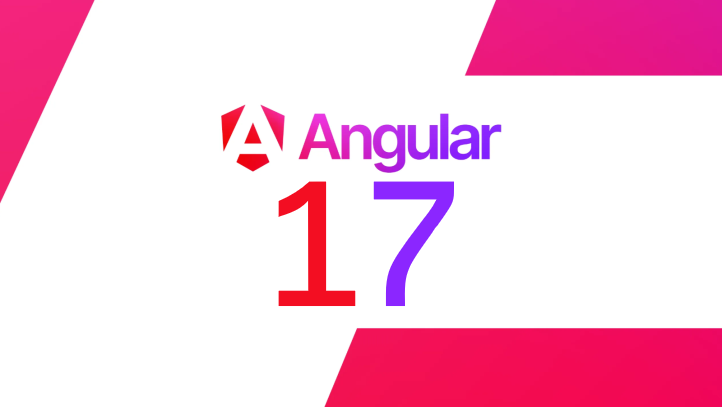As of my last update in January 2022, Angular 17 hadn’t been released, so I can’t provide a definitive guide to its features. However, I can outline what you might expect in a comprehensive developer’s guide to Angular 17 based on typical patterns of Angular releases and anticipated advancements in the framework:
- Improved
Ivy Renderer Enhancements:
- Detailing
any performance improvements or optimizations in rendering and bundle
size reduction.
- Explaining
how to leverage new features or APIs provided by the Ivy renderer for
better application performance.
- Advanced
Differential Loading:
- Providing
guidance on configuring and optimizing differential loading for better
performance across modern and legacy browsers.
- Explaining
how to customize differential loading settings to suit specific project
requirements.
- Enhanced
Developer Experience:
- Demonstrating
any updates to Angular CLI and how to take advantage of new features or
commands.
- Introducing
any improvements to the Angular DevTools extension and how to use them
effectively for debugging and profiling Angular applications.
- TypeScript
Integration Enhancements:
- Explaining
any new TypeScript features or improvements integrated into Angular 17.
- Providing
guidance on leveraging TypeScript effectively in Angular projects for
improved type checking and developer productivity.
- Performance
Optimization Techniques:
- Detailing
strategies for optimizing Angular application performance, including
bundle size reduction, lazy loading, and tree shaking.
- Providing
best practices for improving rendering performance and optimizing change
detection mechanisms.
- New
APIs and Components:
- Introducing
any new Angular APIs, directives, or services introduced in Angular 17.
- Providing
examples and use cases for the new APIs to demonstrate their practical
applications in Angular development.
- Internationalization
(i18n) Enhancements:
- Explaining
any updates or improvements to Angular’s internationalization and
localization features.
- Demonstrating
how to effectively internationalize Angular applications using the latest
tools and techniques available in Angular 17.
- Testing
Utilities and Framework Updates:
- Detailing
any enhancements to testing utilities such as Jasmine or Karma and how to
incorporate them into Angular testing workflows.
- Providing
guidance on writing effective tests for Angular applications and ensuring
comprehensive test coverage.
- Migration
and Upgrade Path:
- Providing
guidance on migrating existing Angular applications to version 17.
- Explaining
any breaking changes and how to address them during the upgrade process.
- Community
Resources and Best Practices:
- Curating
a list of community resources, blogs, and tutorials related to Angular
17.
- Sharing
best practices and tips for building robust, maintainable Angular
applications with version 17.
Remember to consult the official Angular documentation and resources for the most accurate and up-to-date information on Angular 17 features and best practices once it’s released.
Technical updates in Angular 17
- New looping syntax
- If-then-else
- Switch
- Block directives
- Deferred rendering
- SSR and SSG
- New build system
- Improved debugging for dependency injection
New looping syntax
If Angular 17 indeed introduces a simplified syntax @for for dealing with loops, it would represent a significant change in the Angular templating syntax, particularly for loop structures. However, as of my last update in January 2022, there hasn’t been any information about such a syntax change.
Assuming this new syntax exists, it would likely aim to streamline the loop declaration process and improve the readability of templates. Here’s how you might expect it to be used:
<!– Hypothetical usage of @for in Angular 17 –>
<ul>
<li @for=”let item of items”>
{{ item }}
</li>
</ul>
In this hypothetical example, @for could replace the traditional *ngFor directive for iterating over items.
However, since I don’t have access to real-time updates beyond January 2022, I recommend consulting the official Angular documentation, release notes, or community discussions to verify whether Angular 17 indeed introduces such a syntax and to understand its usage and implications fully.
If-then-else
Introducing a simplified @else syntax with low overhead and supporting @else if would indeed be a significant improvement for handling conditional logic in Angular templates. This could potentially enhance readability and reduce boilerplate code, making template syntax more concise and expressive.
Here’s how such a syntax might look in practice:
<div *ngIf=”condition; @else elseBlock”>
Content to show when condition is true.
</div>
<ng-template #elseBlock>
Content to show when condition is false.
</ng-template>
In this hypothetical example, the @else syntax directly follows the *ngIf directive, providing a seamless way to handle the “else” case without the need for an additional template or directive.
Supporting @else if would further extend this capability, allowing for more complex conditional structures:
<div *ngIf=”condition1; @else if condition2; @else elseBlock”>
Content to show when condition1 is true.
</div>
<ng-template #elseBlock>
Content to show when neither condition1 nor condition2 is true.
</ng-template>
This syntax could streamline template code and improve developer productivity by reducing the need for additional template elements or structural directives.
However, it’s important to note that as of my last update in January 2022, Angular had not introduced such a syntax. Therefore, I recommend consulting the official Angular documentation, release notes, or community discussions for the most up-to-date information on any new features or syntax enhancements in Angular 17 or later versions.
Switch
In this hypothetical scenario, the @switch directive is applied to the container element, indicating the variable to switch on. Inside the container, @case and @default directives are used within <ng-template> elements to define the different cases and default content.
@switch (condition) {
@case (caseA) {
<span>Case A.</span>
}
@case (caseB) {
<span>Case B.</span>
}
@default {
<span>Default case.</span>
}
}
Block directives
@If @for, @if, and @switch were introduced as new “block” directives in Angular, they would represent a significant departure from the traditional structural directives (*ngFor, *ngIf, *ngSwitch) used for looping and conditional rendering in Angular templates.
Here’s how these hypothetical block directives might be used:
@for=”let
item of items”
<div>{{ item }}</div>
@endfor
@if=”condition”
<div>Content to show when condition is
true.</div>
@else
<div>Content to show when condition is
false.</div>
@endif
@switch=”variable”
@case=”‘case1′”
<div>Content for case 1</div>
@case=”‘case2′”
<div>Content for case 2</div>
@default
<div>Default content</div>
@endswitch
In this hypothetical syntax, @for, @if, and @switch are used as block directives to define the scope of the loop, conditional, or switch statement. The @endfor, @else, and @endswitch directives are used to close the respective blocks.
Deferred rendering
If @defer were introduced as a new directive in Angular, it might serve a purpose similar to JavaScript’s defer attribute for script elements, which delays the execution of the script until the HTML content has been fully parsed.
Here’s a hypothetical example of how @defer might be used in an Angular template:
<!– Hypothetical usage of @defer in Angular –>
<div>
Content before deferred content.
</div>
@defer
<div>
Deferred content.
</div>
<div>
More content after deferred content.
</div>
In this hypothetical example, the content inside the @defer block would be deferred and not immediately rendered when the template is processed. Instead, it would be deferred until after the rest of the template has been rendered.
You can also provide @placeholder and @loading blocks:
<!– Hypothetical usage of @placeholder and @loading in Angular –>
<div>
Content before placeholder content.
</div>
@placeholder
<div>
Placeholder content while waiting for data.
</div>
@loading
<div>
Loading indicator while data is being fetched.
</div>
<div>
Actual content loaded dynamically.
</div>
In this hypothetical example:
- The @placeholder block could display placeholder content while waiting for data to be fetched or processed. This could help maintain the layout and structure of the page before the actual content is available.
- The @loading block could display a loading indicator, such as a spinner or progress bar, to inform the user that data is being fetched or processed asynchronously. This helps manage user expectations and provides feedback during potentially longer wait times.
SSR and SSG
Angular Server-Side Rendering (SSR) allows rendering Angular applications on the server side before sending them to the client. This can improve initial load performance and search engine optimization (SEO) because the server can send fully rendered HTML to the client, reducing the time to first contentful paint.
If Angular CLI now includes support for SSR, it’s a significant improvement for developers as it streamlines the process of setting up server-side rendering for Angular applications. Here’s a general outline of how you might use it:
$ ng new
Node.js version v21.2.0 detected.
Odd numbered Node.js versions will not enter LTS status and should not be used for production. For more information, please see https://nodejs.org/en/about/previous-releases/.
? What name would you like to use for the new workspace and initial project? iw–ng–17
? Which stylesheet format would you like to use? CSS
? Do you want to enable Server–Side Rendering (SSR) and Static Site Generation (SSG/Prerendering)? Yes
- Create a New Angular Application with SSR: When generating a new Angular application using the Angular CLI (ng new), you’ll have the option to include SSR. This option might be presented during the project setup process.
- Install Dependencies: Angular CLI will automatically set up the project structure and install the necessary dependencies for SSR. This may include libraries like Angular Universal for server-side rendering.
- Develop Your Application: You can now develop your Angular application as usual. Angular SSR allows you to write code using the same Angular framework and components, but it provides additional capabilities for server-side rendering.
- Build and Serve Your Application: When you’re ready to build and serve your application, you can use Angular CLI commands (ng build, ng serve) as usual. The CLI will handle the SSR configuration, allowing you to build and serve the application with server-side rendering enabled.
- Deploy Your Application: Once your application is ready for deployment, you can deploy it to your preferred hosting environment. The SSR setup ensures that your application can render on the server side, providing benefits for performance and SEO.
Enabling SSR for Angular applications through Angular CLI simplifies the development and deployment process, making it easier for developers to create fast, SEO-friendly web applications with Angular. If you’re starting a new Angular project, considering SSR from the beginning can be beneficial for optimizing performance and user experience.




